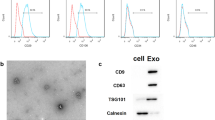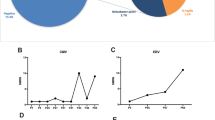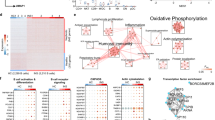Abstract
B cell hyper-function plays an important role in the pathogenesis of immune thrombocytopenia (ITP), but the molecular mechanisms underlying such changes remain unclear. We sought to identify regulators of B cell dysfunction in ITP patients through transcriptome sequencing and the use of inhibitors. B cells were isolated from PBMC of 25 ITP patients for B cell function test and transcriptome sequencing. For the potential regulatory factors identified by transcriptome sequencing, the corresponding protein inhibitors were used to explore the regulatory effect of the regulatory factors on B cell dysfunction in vitro. In this study, increased antibody production, enhanced terminal differentiation and highly expressed costimulatory molecules CD80 and CD86 were found in B cells of patients with ITP. In addition, RNA sequencing revealed highly activated mTOR pathway in these pathogenic B cells, indicating that the mTOR pathway may be involved in B cell hyper-function. Furthermore, mTOR inhibitors rapamycin or Torin1 effectively blocked the activation of mTORC1 in B cells, resulting in reduce antibody secretion, impaired differentiation of B cells into plasmablasts and downregulation of costimulatory molecules. Interestingly, as an unspecific inhibitor of mTORC2 besides mTORC1, Torin1 did not show a stronger capacity to modulate B cell function than rapamycin, suggesting that the regulation of B cells by Torin1 may depend on blockade of mTORC1 rather than mTORC2 pathway. These results indicated that the activation of mTORC1 pathway is involved in B cell dysfunction in patients with ITP, and inhibition of mTORC1 pathway might be a potential therapeutic approach for ITP.




Similar content being viewed by others
Data availability
The data that support the findings of this study are available from the corresponding author upon reasonable request.
References
Swinkels M, Rijkers M, Voorberg J, Vidarsson G, Leebeek FWG, Jansen AJG (2018) Emerging concepts in immune thrombocytopenia. Front Immunol 9:880. https://doi.org/10.3389/fimmu.2018.00880
Hou M, Stockelberg D, Kutti J, Wadenvik H (1995) Antibodies against platelet Gpib/Ix, Gpiib/Iiia, and other platelet antigens in chronic idiopathic thrombocytopenic purpura. Eur J Haematol 55(5):307–314
Audia S, Rossato M, Santegoets K et al (2014) Splenic TFH expansion participates in B-cell differentiation and antiplatelet-antibody production during immune thrombocytopenia. Blood 124(18):2858–2866. https://doi.org/10.1182/blood-2014-03-563445
Olsson B, Andersson PO, Jernas M et al (2003) T-cell-mediated cytotoxicity toward platelets in chronic idiopathic thrombocytopenic purpura. Nat Med 9(9):1123–1124. https://doi.org/10.1038/nm921
Zufferey A, Kapur R, Semple JW (2017) Pathogenesis and therapeutic mechanisms in immune thrombocytopenia (ITP). J Clin Med 6(2). https://doi.org/10.3390/jcm6020016
Khodadi E, Asnafi AA, Shahrabi S, Shahjahani M, Saki N (2016) Bone marrow niche in immune thrombocytopenia: a focus on megakaryopoiesis. Ann Hematol 95(11):1765–1776. https://doi.org/10.1007/s00277-016-2703-1
Jernas M, Hou Y, Celind FS et al (2013) Differences in gene expression and cytokine levels between newly diagnosed and chronic pediatric ITP. Blood 122(10):1789–1792. https://doi.org/10.1182/blood-2013-05-502807
Wang S, Guan Y, Wang Y et al (2018) Reduced PTEN involved in primary immune thrombocytopenia via contributing to B cell hyper-responsiveness. Mol Immunol 93:144–151. https://doi.org/10.1016/j.molimm.2017.11.010
Hayashi T, Nakamae H, Takeda S, et al. Increasing numbers of CD19 + CD24(high)CD38(high) regulatory B cells and pre-germinal center B cells reflect activated autoimmunity and predict future treatment response in patients with untreated immune thrombocytopenia. Int J Hematol 2021;114(5):580-90 doi: https://doi.org/10.1007/s12185-021-03192-w.
Ballem PJ, Segal GM, Stratton JR, Gernsheimer T, Adamson JW, Slichter SJ (1987) Mechanisms of thrombocytopenia in chronic autoimmune thrombocytopenic purpura. Evidence of both impaired platelet production and increased platelet clearance. J Clin Invest 80(1):33–40. https://doi.org/10.1172/JCI113060
Bakchoul T, Sachs UJ (2016) Platelet destruction in immune thrombocytopenia. Understanding the mechanisms. Hamostaseologie 36(3):187–194. https://doi.org/10.5482/HAMO-14-09-0043
Yu TS, Wang HY, Zhao YJ et al (2021) Abnormalities of bone marrow B cells and plasma cells in primary immune thrombocytopenia. Blood Adv 5(20):4087–4101. https://doi.org/10.1182/bloodadvances.2020003860
Mahevas M, Patin P, Huetz F et al (2013) B cell depletion in immune thrombocytopenia reveals splenic long-lived plasma cells. J Clin Invest 123(1):432–442. https://doi.org/10.1172/JCI65689
Hua Z, Hou B (2020) The role of B cell antigen presentation in the initiation of CD4+ T cell response. Immunol Rev 296(1):24–35. https://doi.org/10.1111/imr.12859
Schultze JL, Michalak S, Seamon MJ et al (1997) CD40-activated human B cells: an alternative source of highly efficient antigen presenting cells to generate autologous antigen-specific T cells for adoptive immunotherapy. J Clin Invest 100(11):2757–2765. https://doi.org/10.1172/Jci119822
Deshayes S, Khellaf M, Zarour A et al (2019) Long-term safety and efficacy of rituximab in 248 adults with immune thrombocytopenia: results at 5 years from the French prospective registry ITP-ritux. Am J Hematol 94(12):1314–1324. https://doi.org/10.1002/ajh.25632
Yang L, Li N, Yang D et al (2021) CCL2 regulation of MST1-mTOR-STAT1 signaling axis controls BCR signaling and B-cell differentiation. Cell Death Differ 28(9):2616–2633. https://doi.org/10.1038/s41418-021-00775-2
Iwata S, Zhang MZ, Hajime M et al (2021) Pathological role of activated mTOR in CXCR3(+) memory B cells of rheumatoid arthritis. Rheumatology 60(11):5452–5462. https://doi.org/10.1093/rheumatology/keab229
Saxton RA, Sabatini DM (2017) mTOR signaling in growth, metabolism, and disease (vol 168, pg 960, 2017). Cell 169(2):362–362. https://doi.org/10.1016/j.cell.2017.03.035
Benhamron S, Pattanayak SP, Berger M, Tirosh B (2015) mTOR activation promotes plasma cell differentiation and bypasses XBP-1 for immunoglobulin secretion. Mol Cell Biol 35(1):153–166. https://doi.org/10.1128/Mcb.01187-14
Lazorchak AS, Su B (2011) Perspectives on the role of mTORC2 in B lymphocyte development, immunity and tumorigenesis. Protein Cell 2(7):523–530. https://doi.org/10.1007/s13238-011-1077-3
Zhao Y, Han P, Liu L et al (2019) Indirubin modulates CD4(+) T-cell homeostasis via PD1/PTEN/AKT signalling pathway in immune thrombocytopenia. J Cell Mol Med 23(3):1885–1898. https://doi.org/10.1111/jcmm.14089
Wang Y, Zhou YM, Graves DT (2014) FOXO transcription factors: their clinical significance and regulation. Biomed Res Int 2014:925350. https://doi.org/10.1155/2014/925350
Wang D, Cassady K, Zou Z, Zhang X, Feng Y (2022) Progress on the efficacy and potential mechanisms of rapamycin in the treatment of immune thrombocytopenia. Hematology 27(1):1282–1289. https://doi.org/10.1080/16078454.2022.2151230
Feng Y, Xiao Y, Yan H et al (2020) Sirolimus as rescue therapy for refractory/relapsed immune thrombocytopenia: results of a single-center, prospective, single-arm study. Front Med (Lausanne) 7:110. https://doi.org/10.3389/fmed.2020.00110
Li H, Ji J, Du Y et al (2020) Sirolimus is effective for primary relapsed/refractory autoimmune cytopenia: a multicenter study. Exp Hematol 89:87–95. https://doi.org/10.1016/j.exphem.2020.08.001
Rodeghiero F, Stasi R, Gernsheimer T et al (2009) Standardization of terminology, definitions and outcome criteria in immune thrombocytopenic purpura of adults and children: report from an international working group. Blood 113(11):2386–2393. https://doi.org/10.1182/blood-2008-07-162503
Wu YJ, Liu H, Zeng QZ et al (2022) All-trans retinoic acid plus low-dose rituximab vs low-dose rituximab in corticosteroid-resistant or relapsed ITP. Blood 139(3):333–342. https://doi.org/10.1182/blood.2021013393
Ringheim GE, Wampole M, Oberoi K (2021) Bruton’s tyrosine kinase (BTK) inhibitors and autoimmune diseases: making sense of BTK inhibitor specificity profiles and recent clinical trial successes and failures. Front Immunol 12:662223. https://doi.org/10.3389/fimmu.2021.662223
Deng J, Wang X, Chen Q et al (2016) B1a cells play a pathogenic role in the development of autoimmune arthritis. Oncotarget 7(15):19299–19311. https://doi.org/10.18632/oncotarget.8244
Wang S, Wang JY, Kumar V et al (2018) IL-21 drives expansion and plasma cell differentiation of autoreactive CD11c(hi)T-bet(+) B cells in SLE. Nat Commun 9:1758. https://doi.org/10.1038/s41467-018-03750-7
Volkov M, van Schie KA, van der Woude D (2020) Autoantibodies and B Cells: the ABC of rheumatoid arthritis pathophysiology. Immunological Reviews 294(1):148–163. https://doi.org/10.1111/imr.12829
Setz CS, Hug E, Khadour A et al (2018) PI3K-mediated Blimp-1 activation controls B cell selection and homeostasis. Cell Rep 24(2):391–405. https://doi.org/10.1016/j.celrep.2018.06.035
Scharer CD, Patterson DG, Mi T, Price MJ, Hicks SL, Boss JM (2020) Antibody-secreting cell destiny emerges during the initial stages of B-cell activation. Nat Commun 11(1):3989. https://doi.org/10.1038/s41467-020-17798-x
Klein U, Casola S, Cattoretti G et al (2006) Transcription factor IRF4 controls plasma cell differentiation and class-switch recombination. Nat Immunol 7(7):773–782. https://doi.org/10.1038/ni1357
Syedbasha M, Bonfiglio F, Linnik J, Stuehler C, Wuthrich D, Egli A (2020) Interferon-lambda enhances the differentiation of naive B cells into plasmablasts via the mTORC1 pathway. Cell Rep 33(1):108211. https://doi.org/10.1016/j.celrep.2020.108211
Van Coillie S, Wiernicki B, Xu J (2020) Molecular and cellular functions of CTLA-4. Adv Exp Med Biol 1248:7–32. https://doi.org/10.1007/978-981-15-3266-5_2
Lim TS, Goh JKH, Mortellaro A, Lim CT, Hammerling GJ, Ricciardi-Castagnoli P (2012) CD80 and CD86 differentially regulate mechanical interactions of T-cells with antigen-presenting dendritic cells and B-cells. Plos One 7(9):e45185. https://doi.org/10.1371/journal.pone.0045185
Liu PC, Ssu CT, Tsao YP et al (2020) Cytotoxic T lymphocyte-associated antigen-4-Ig (CTLA-4-Ig) suppresses Staphylococcus aureus-induced CD80, CD86, and pro-inflammatory cytokine expression in human B cells. Arthritis Res Ther 22(1):64. https://doi.org/10.1186/s13075-020-2138-x
Yang HJ, Rudge DG, Koos JD, Vaidialingam B, Yang HJ, Pavletich NP (2013) mTOR kinase structure, mechanism and regulation. Nature 497(7448):217. https://doi.org/10.1038/nature12122
Lorenzetti R, Janowska I, Smulski CR et al (2019) Abatacept modulates CD80 and CD86 expression and memory formation in human B-cells. J Autoimmun 101:145–152. https://doi.org/10.1016/j.jaut.2019.04.016
Thoreen CC, Kang SA, Chang JW et al (2009) An ATP-competitive mammalian target of rapamycin inhibitor reveals rapamycin-resistant functions of mTORC1. J Biol Chem 284(12):8023–8032. https://doi.org/10.1074/jbc.M900301200
Atkin J, Halova L, Ferguson J et al (2014) Torin1-mediated TOR kinase inhibition reduces Wee1 levels and advances mitotic commitment in fission yeast and HeLa cells. J Cell Sci 127(6):1346–1356. https://doi.org/10.1242/jcs.146373
Sato T, Ishii J, Ota Y, Sasaki E, Shibagaki Y, Hattori S (2016) Mammalian target of rapamycin (mTOR) complex 2 regulates filamin A-dependent focal adhesion dynamics and cell migration. Genes Cells 21(6):579–593. https://doi.org/10.1111/gtc.12366
Funding
This work was supported by the Natural Science Foundation of Shandong Province (ZR2021MH188), the National Natural Science Foundation of China (No. 81300383, No. 81900121, No. 81973994, No. 82070122), the Taishan Scholars Program (No. tsqn202103167), the Clinical Research Project of Shandong University (2020SDUCRCC015), the Young Taishan Scholar Foundation of Shandong Province (No. tsqn201909175), the Natural Science Foundation for Distinguished Young Scholar of Shandong Province (ZR2021JQ28) and the Clinical Research Center of Shandong University (No. 2020SDUCRCC009).
Author information
Authors and Affiliations
Contributions
All authors contributed to the study conception and design. YX and YS designed the research and revised the manuscript. YX and LL performed the experiments, analyzed the data and wrote the article. YH, SD, SX, HZ, LS, GL, TY, QL, MX, JY, PJ and MH contributed to the experimental work and the collection of patients’ features. All authors read and approved the final manuscript.
Corresponding author
Ethics declarations
Ethics approval and consent to participate
The study was in compliance with the Declaration of Helsinki and approved by the Ethics Committee of Qilu Hospital, Shandong University. Informed consent was obtained from all patients for being included in the study.
Conflict of interest
The authors declare no competing interests.
Additional information
Publisher’s note
Springer Nature remains neutral with regard to jurisdictional claims in published maps and institutional affiliations.
Supplementary information
Rights and permissions
Springer Nature or its licensor (e.g. a society or other partner) holds exclusive rights to this article under a publishing agreement with the author(s) or other rightsholder(s); author self-archiving of the accepted manuscript version of this article is solely governed by the terms of such publishing agreement and applicable law.
About this article
Cite this article
Xiang, Y., Liu, L., Hou, Y. et al. The mTORC1 pathway participate in hyper-function of B cells in immune thrombocytopenia. Ann Hematol 102, 2317–2327 (2023). https://doi.org/10.1007/s00277-023-05348-6
Received:
Accepted:
Published:
Issue Date:
DOI: https://doi.org/10.1007/s00277-023-05348-6




